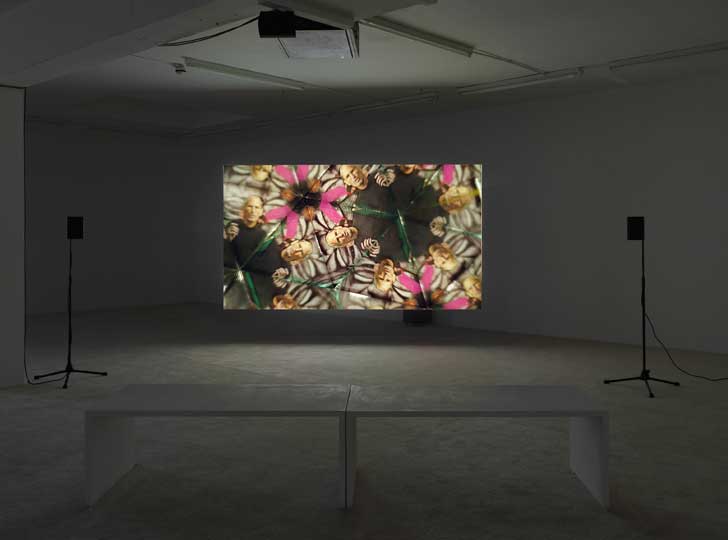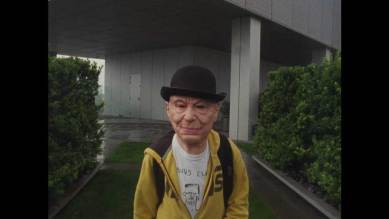A few years ago I watched a performance by London-based artist Beatrice Gibson, part of a series of events at the Whitechapel Gallery, exploring the possibilities of art writing. Gibson took as her starting point B.S. Johnson’s experimental novel House Mother Normal, which consists of eight monologues by eight elderly people living in a care home. Each character tells the same events in the same number of pages; the passages disintegrate into incoherence as the novel progresses – a falling apart that is expressed graphically through the book’s typography. Describing her performance as a ‘vertical reading’ of Johnson’s novel, Gibson and her two fellow performers added further discord by reading the passages out loud at the same time – as a way of expressing this textual simultaneity in sound.
This attempt to capture the novel’s voices, which resulted in a polyphonic babble, is typical of Gibson’s work. Her films consistently revolve around fiction, the voice, sound, and the slippery nature of language itself. Musical scores and improvisation (and its written articulation), also inform many of Gibson’s works. She cites John Cage and Cornelius Cardew as influences, suggesting that her taste for experimental literature extends to her taste for the musical avant-garde. Gibson’s 2012 film, The Tiger’s Mind, is informed by Cardew’s abstract score of the same name, which functioned as a tool for scripting her collaborative film.
Gibson’s new film, F for Fibonacci, currently on show at Laura Bartlett Gallery in London’s East End explores many of the same subjects. Literary fiction is once again the film’s departure; this time, it’s William Gaddis’s biting satire, JR. The novel follows an 11-year-old capitalist who creates (with the help of the school’s resident composer) a vast financial empire, mostly from the confines of a phone booth. Gaddis’s novel is a masterpiece of conversation, noise, and interruption. Gibson’s film develops an episode from the novel, in which the composer meets with a banker to discuss music and finance. The result is a disorderly artwork that performs and plays with Gaddis’s text.
There’s a lot to take in. Meditations on finance jostle with footage of music lessons and maths classes, while images of graphic scores, science experiments and the stock exchange fall in and out of focus. Gibson’s film also draws on the work of British educator and composer John Paynter, who advocated musical experimentation in schools. The presence of an 11-year-old child at the centre of Gibson’s film is both a nod to Gaddis’s protagonist and reflects Paynter’s emphasis on child-centred education. In the film, Gibson invites the youngster to create a virtual office in the video game Minecraft and to devise a fictional character – Mr Money – who appears in cartoon form throughout. Gibson’s conversation with the child about his invented character overlays the film’s delirious content.
Giving the film over to someone else is also typical of Gibson. She relinquishes artistic – or authorial – control in many of her works and continuously emphasises the role of collaboration. In F For Fibonacci, no single image or voice is privileged, resulting in a jumble of random parts that nevertheless all seem to link to each other. The film’s title acknowledges the spiraling effect inherent in imposing order, while its reflections on aleatory music also speak of Gibson’s interest in chance and the gambles taken in business, nature and art. Like all of her films – and like the literature and music that inspires her – this piece revels in the abstract, open-ended and indeterminate.
‘Beatrice Gibson: F for Fibonacci’ is at Laura Bartlett Gallery, London, until 23 November.
Unlimited access from just $16 every 3 months
Subscribe to get unlimited and exclusive access to the top art stories, interviews and exhibition reviews.


















![Masterpiece [Re]discovery 2022. Photo: Ben Fisher Photography, courtesy of Masterpiece London](http://www.apollo-magazine.com/wp-content/uploads/2022/07/MPL2022_4263.jpg)
Has the Fitzwilliam got its rehang right?